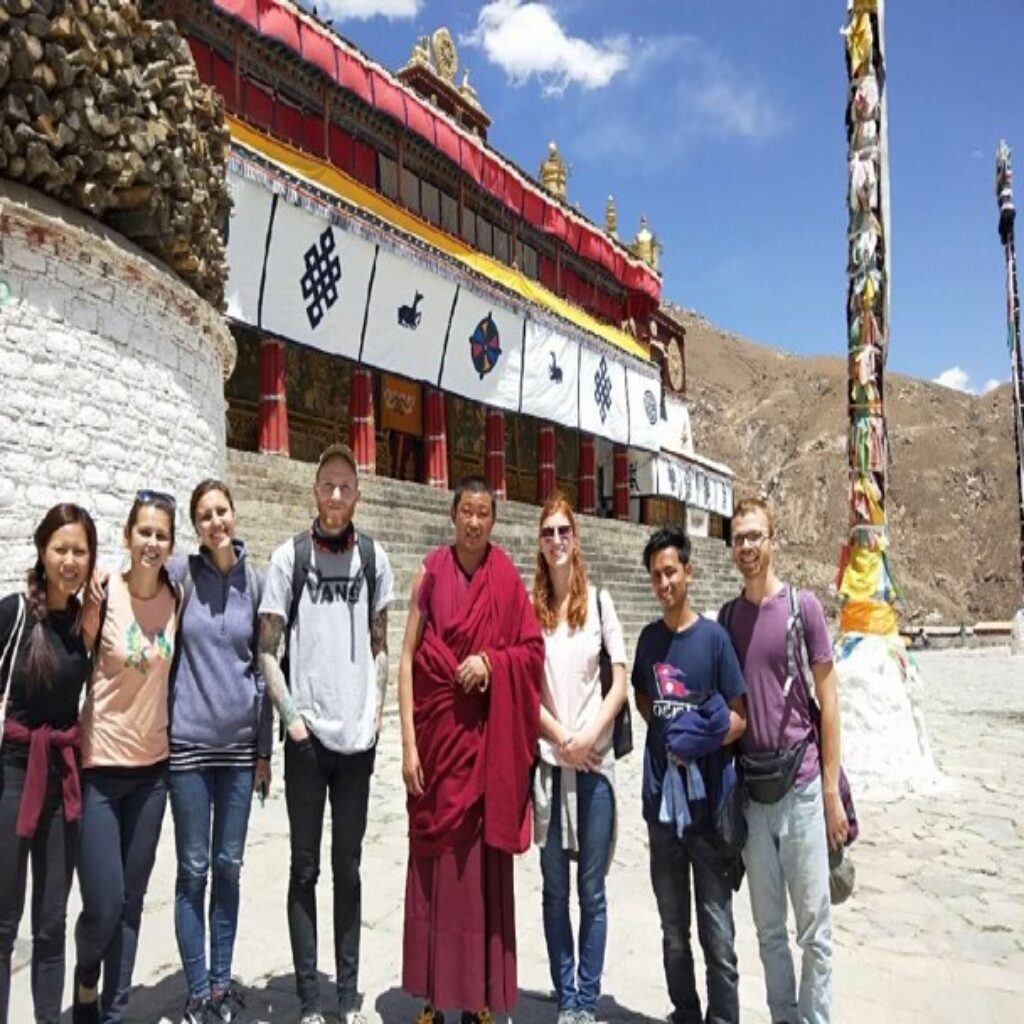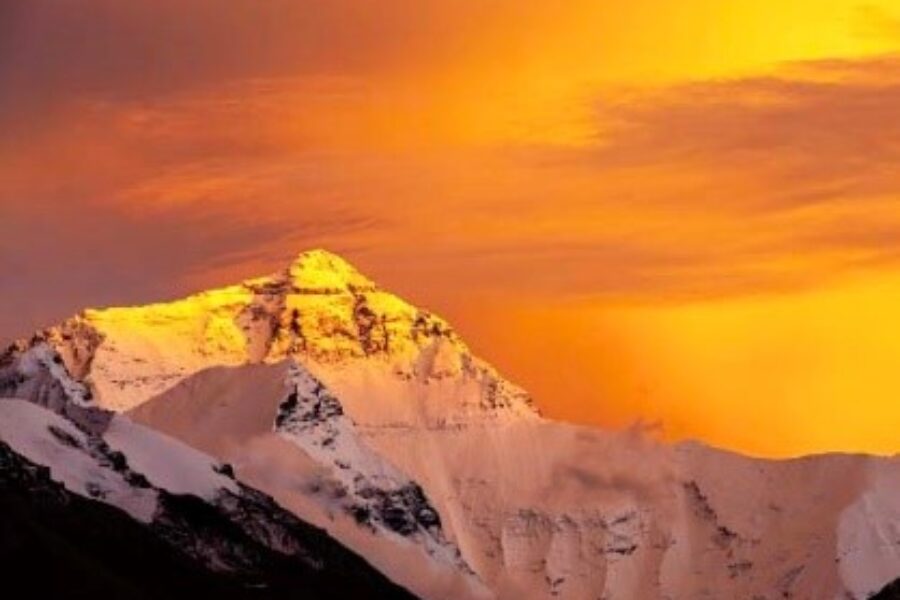Welcome to the enchanting land of Lhasa, the heart of Tibet, where ancient traditions blend seamlessly with breathtaking landscapes. In this blog, we embark on a journey through the spiritual and cultural riches of Lhasa, uncovering its hidden gems and ensuring a seamless and unforgettable travel experience.
Accommodations: Embracing Tibetan Hospitality
Throughout your journey in Lhasa, immerse yourself in the warmth and hospitality of Tibetan culture with carefully curated accommodations. These cozy Tibetan hotels, often locally owned and operated, offer more than just a place to rest your head. Nestled near vibrant cultural attractions and old city areas, these accommodations provide a perfect blend of comfort and authenticity. Imagine waking up to stunning views of snow-capped mountains or winding streets bustling with life. Each day promises a new adventure, complemented by the comfort and charm of your Tibetan abode.
Transportation: Journeying in Comfort
As you traverse the ancient streets and winding roads of Lhasa, rest assured that your transportation needs are well taken care of. Our dedicated tourist vehicles ensure a comfortable and safe journey for all travelers. Whether you’re exploring in a small group or embarking on a solo adventure, our fleet of vans and minibuses offers reliable and attentive service. From regular safety checks to impeccable cleanliness, we prioritize your comfort and well-being throughout your travels.
Safety Assurance at High Altitudes
Venturing into the majestic heights of Tibet brings with it the exhilaration of high-altitude exploration. However, it’s essential to prioritize your safety amidst the thin air and breathtaking vistas. Our comprehensive high-altitude travel safety assurance ensures that you’re equipped to handle the challenges of altitude sickness. With medical oxygen tanks readily available in our vehicles, you can breathe easy knowing that your health is our top priority. Additionally, our insurance coverage provides peace of mind, offering assistance in case of any unexpected health concerns during your journey.
Permits and Logistics: Navigating the Administrative Maze
Before embarking on your journey to Lhasa, it’s crucial to navigate the intricate process of obtaining permits and necessary documents. Our experienced team handles the logistics, making the process seamless and stress-free for travelers. From applying for Tibet Travel Permits to arranging shuttle transfers between the airport or train station and your hotel, we take care of every detail. Foreign visitors, including Taiwanese nationals, can rely on our expertise to facilitate the application process, ensuring a smooth transition into the mesmerizing realm of Tibet.

Exploring Lhasa’s Cultural Treasures
Lhasa, the spiritual and cultural capital of Tibet, beckons travelers with its rich tapestry of history, religion, and tradition. As you step into this ancient city, you are transported to a realm where time seems to stand still, and the echoes of centuries past resonate in every corner. In this section, we dive deeper into Lhasa’s cultural treasures, offering a detailed exploration of its most iconic landmarks and sacred sites.
1. Potala Palace: A Symbol of Tibetan Majesty
Perched majestically atop Marpo Ri (Red Hill), the Potala Palace is an architectural marvel that epitomizes the grandeur and splendor of Tibetan civilization. Originally built in the 7th century by King Songtsen Gampo, the palace served as the winter residence of the Dalai Lama until the 14th Dalai Lama fled to India during the Tibetan uprising in 1959.
Today, the Potala Palace stands as a UNESCO World Heritage Site and a symbol of Tibetan sovereignty and cultural identity. As you ascend the 365 steps to the main entrance, you are greeted by the imposing whitewashed walls and gilded roofs of this magnificent structure. Inside, a labyrinth of chapels, halls, and chambers unfolds, each adorned with intricate frescoes, thangkas (religious paintings), and sacred relics.
Highlights of the Potala Palace include the Red Palace, home to the Dalai Lama’s ceremonial chambers and tombs, and the White Palace, which once housed the Dalai Lama’s living quarters and administrative offices. From the breathtaking views of the surrounding Himalayan mountains to the serene beauty of the meditation caves, every corner of the Potala Palace exudes an aura of reverence and spirituality.
2. Jokhang Temple: The Heart of Tibetan Buddhism
Located in the heart of Lhasa’s old town, the Jokhang Temple is the holiest site in Tibetan Buddhism and a focal point of religious pilgrimage for devout Buddhists from around the world. Built in the 7th century by King Songtsen Gampo’s Nepalese queen, Princess Bhrikuti, and Chinese princess, Princess Wencheng, the temple enshrines a sacred statue of Shakyamuni Buddha, believed to have been consecrated by the Buddha himself.
As you approach the temple’s ornate façade, you are greeted by a profusion of colorful prayer flags fluttering in the breeze and the rhythmic chant of Buddhist mantras. Inside, the air is heavy with the scent of incense, and the sound of monks chanting fills the halls. Pilgrims from all walks of life prostrate themselves before the statue of Shakyamuni, offering prayers and offerings in hopes of attaining spiritual merit.
The Jokhang Temple is also home to a vast collection of religious artifacts, including ancient scriptures, thangkas, and precious jewels. A stroll around the temple’s inner kora (circumambulation path) offers a glimpse into the daily lives of Tibetan devotees, as they engage in the ritual of walking clockwise around the temple, spinning prayer wheels and reciting mantras.
3. Barkhor Street: A Living Tapestry of Tibetan Culture
Surrounding the Jokhang Temple is Barkhor Street, a bustling thoroughfare that serves as the epicenter of Lhasa’s vibrant cultural life. Lined with traditional Tibetan shops, tea houses, and market stalls, Barkhor Street offers a sensory feast for the senses, with its kaleidoscope of colors, sounds, and aromas.
As you meander through the narrow alleyways of Barkhor Street, you’ll encounter a fascinating array of handicrafts, textiles, and religious artifacts, each imbued with the rich symbolism and craftsmanship of Tibetan culture. From intricately carved prayer beads to exquisitely woven Tibetan rugs, every item tells a story of devotion and craftsmanship passed down through generations.
But Barkhor Street is more than just a marketplace—it’s a living testament to the resilience and spirit of the Tibetan people. Here, you’ll witness monks in crimson robes mingling with local artisans, pilgrims prostrating themselves on the cobblestone streets, and travelers from every corner of the globe soaking in the vibrant energy of this sacred space.
4. Local Folk Activities: Immersing Yourself in Tibetan Traditions
No visit to Lhasa would be complete without immersing yourself in the rich tapestry of Tibetan traditions and customs. From joining local pilgrims in the kora around the Jokhang Temple to savoring sweet tea at a traditional Tibetan teahouse, these authentic experiences offer a glimpse into the heart and soul of Tibetan culture.
One of the most cherished traditions in Lhasa is the practice of Tibetan opera, a vibrant art form that combines music, dance, and theater to depict tales of love, honor, and enlightenment. Whether you’re watching a performance at a local theater or participating in a traditional dance workshop, Tibetan opera offers a window into the spiritual and artistic heritage of Tibet.
As your journey through Lhasa draws to a close, you’ll depart with cherished memories and a deep appreciation for the timeless beauty of Tibet. From the tranquil monasteries to the bustling streets, every moment spent in Lhasa is a testament to the enduring spirit of this mystical land.





You can also put a chatbox on your blog for more interactivity among readers.”‘.’* https://www.metooo.es/u/674989562f31fa119cac7c81